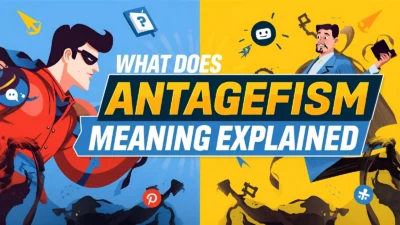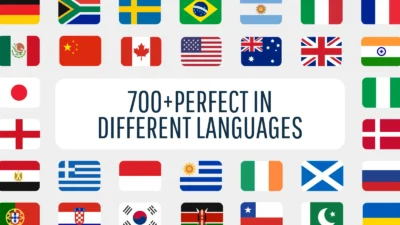If you’ve ever opened a message that just says “HY” and felt unsure how to respond, you’re not alone. Two little letters can mean more than you’d expect. Depending on who sent it and where you saw it—Snapchat, Instagram, TikTok, or just regular texting—its meaning changes slightly. Let’s explore what “HY” really means, how it’s used, and how to understand it in every situation.
🧩 What “HY” Usually Means
In most cases, “HY” stands for “Hell Yeah” or “Hell Yes.” It’s a bold, high-energy way to express agreement or excitement. It’s the kind of reply you send when someone says something you’re totally on board with.
Examples:
- Friend: “Want to go to the game tonight?”
- You: “HY!”
- Friend: “We finally booked our trip!”
- You: “HY, can’t wait!”
This short form keeps the tone informal, fun, and enthusiastic. It’s popular in fast-paced digital conversations where people want to respond instantly but still sound expressive.
👋 The Friendly Greeting Meaning
Sometimes, “HY” doesn’t mean “Hell Yeah” at all—it’s simply a quick “Hi” or “Hey.” The spelling comes from dropping a letter for speed or style. This use is common in casual chats, online posts, and social media stories.
Examples:
- “HY guys! What’s new?”
- “HY there, miss talking to you!”
When used as a greeting, it usually appears at the start of a conversation rather than as a reply. The tone feels warm and informal.
🧠 Other Possible Interpretations
While “Hell Yeah” and “Hi” are by far the most common, some less frequent meanings of HY exist:
- “Heard You” – a short acknowledgment, like saying “Got it.”
- “Heavy” – rare slang describing something serious, deep, or intense.
- “Hype You” – used in fan culture or gaming communities to cheer someone up or show support.
The intended meaning depends heavily on context, tone, and platform.
🔍 How Context Changes Everything
Understanding abbreviations like HY requires looking at where and how they’re used. The same two letters can shift meaning dramatically.
| Situation | Probable Meaning | Tone |
|---|---|---|
| Response to a question or plan | Hell Yeah | Excited, confident |
| Opening a chat message | Hi / Hey | Friendly, casual |
| Group chat or story caption | Hi / Hey | Playful, social |
| Comment reacting to good news | Hell Yeah | Supportive, upbeat |
| Gaming or music community | Hype You | Encouraging, energetic |
| Serious conversation | Heard You | Short acknowledgment |
Reading tone cues—like emojis, punctuation, and message order—helps interpret what the sender really means.
📱 Meanings Across Platforms
Each platform has its own style, and HY adapts accordingly:
| Platform | Common Use | Meaning |
|---|---|---|
| Snapchat | Reaction to messages or Snaps | Hell Yeah / Excited reply |
| Story replies or captions | Hi / Hey or enthusiastic comment | |
| TikTok | Video comments | Hell Yeah / Hype |
| Personal chats | Hi / Hey | |
| Twitter / X | Posts or memes | Hell Yeah / Strong approval |
| Discord / Gaming | Team chat | Hype You / Acknowledgment |
This variety explains why the same abbreviation can seem confusing until you know the platform culture.
💬 What It Means From Different People
Tone can also shift depending on who says it.
From a Guy
Usually means excitement, approval, or shared enthusiasm. If he texts “HY!” after plans or achievements, he’s showing energy and agreement.
From a Girl
Could mean friendliness, casual greeting, or enthusiasm. If used with emojis or extra punctuation (“HY!! 😊”), it signals warmth or excitement rather than formality.
In a Flirty Chat
When someone uses HY in a playful, quick-response tone, it can express cheerful interest—similar to “Yesss!” or “You bet!”
🧩 Why People Use “HY”
Abbreviations like HY thrive in digital communication because they combine brevity with emotion. Typing fast on phones encourages users to shorten words while still showing feeling. “HY” saves time but keeps tone intact.
It’s part of modern internet language—what linguists call texting shorthand or digital slang. This type of expression uses acronyms, clipped words, and simplified spellings to create quick, emotional communication. The same pattern appears in other terms like “WYD,” “LOL,” or “OMG.”
🧠 The Psychology Behind Short Texts
When people send brief acronyms like HY, they’re often responding automatically, mirroring speech rhythm. The brain processes the letters as emotional cues.
- Short words like HY deliver immediacy—they feel spontaneous and real.
- They create a sense of closeness—as if the sender is talking face-to-face.
- They reduce formality, making digital space feel more personal.
This explains why so many people adopt slang that compresses emotion into just a few characters.
📖 Examples in Real Conversations
| Message | Likely Meaning | Emotion |
|---|---|---|
| “HY! Missed you.” | Hi / Hey | Friendly |
| “HY!! Let’s goooo!” | Hell Yeah | Excited |
| “HY, I saw your post!” | Hi / Hey | Social connection |
| “HY, that’s awesome news!” | Hell Yeah | Supportive |
| “HY man, ready for the match?” | Hi | Casual check-in |
These examples show how versatile HY can be.
🗣️ Variations and Extended Forms
Online users often play with HY to add emphasis or personal flair:
- HYY – exaggerated excitement or friendliness.
- HYT – “Hell Yeah, Thanks.”
- HYA – “Hell Yeah, Absolutely.”
- HY!! – extra punctuation to increase emotional tone.
Such variations highlight emotion through repetition or punctuation, reflecting how written language mimics spoken enthusiasm.
🧩 Relation to Other Texting Terms
HY belongs to the same family as many quick chat expressions. You might see or use these in similar contexts:
- HMU – Hit Me Up
- WYD – What You Doing
- BRB – Be Right Back
- LOL – Laughing Out Loud
- IDK – I Don’t Know
- OMG – Oh My God
Like these, HY carries tone and intent even when stripped of full words.
🧠 Understanding Through Language Patterns
When looking at abbreviations through a language-processing lens, terms like HY act as semantic shortcuts—compressed signals that carry meaning, emotion, and social function. They rely on shared understanding between sender and receiver.
In linguistics, this connects to contextual semantics (meaning changes by situation), discourse markers (used to manage flow of conversation), and pragmatics (how people interpret messages beyond literal meaning). HY operates through these same principles.
💡 When to Use HY
Use HY when you want to sound casual, energetic, or close to the person you’re texting. It works best:
- In informal chats with friends or family.
- As a quick, excited response to good news.
- In group chats or social media threads where short, lively replies fit the tone.
Example:
“We’re getting pizza tonight.”
“HY! Count me in!”
It adds enthusiasm without needing a full sentence.
🚫 When to Avoid It
There are times when HY might feel out of place:
- Professional communication – stick to full greetings like “Hi” or “Hello.”
- Formal chats – using slang may seem careless.
- When clarity matters – the person might misinterpret what you meant.
If you’re unsure, spell it out. It’s always better to sound clear than confusing.
🧭 Tips to Interpret HY Correctly
- Check position – Start of message = Hi; reply = Hell Yeah.
- Look for tone markers – Multiple exclamation marks = excitement; calm tone = greeting.
- Read timing – Quick reply after a question often means “Yes.”
- Notice emojis – Friendly emojis indicate greeting; fire or party emojis indicate excitement.
- Consider relationship – Close friends often use HY to mean “Hell Yeah,” while acquaintances might mean “Hi.”
💬 Related Expressions
| Expression | Similar Meaning | Use |
|---|---|---|
| “Yup” | Agreement | Quick reply |
| “Yesss” | Excitement | Exaggerated yes |
| “Heyy” | Greeting | Friendly tone |
| “Woohoo” | Enthusiasm | Celebration |
| “Let’s go!” | Energy | Shared excitement |
These are part of the same expressive ecosystem that fuels casual digital communication.
📝 Summary
- HY usually means “Hell Yeah” or “Hi.”
- Its meaning depends on placement, tone, and platform.
- It reflects speed, informality, and emotional expression in digital conversation.
- Variations like HYY or HY!! amplify emotion.
- Understanding HY means reading context—the same way we read tone in real speech.
🧠 Key Takeaways
- Two meanings dominate: excitement (“Hell Yeah”) and greeting (“Hi/Hey”).
- Context decides everything — placement, tone, and emojis matter.
- It’s part of modern slang evolution, just like LOL or BRB.
- Short forms enhance emotion while keeping messages fast.
- Use wisely — perfect for casual chats, not for formal ones.
💡 Conclusion
The abbreviation “HY” may look simple, but it captures the spirit of modern digital talk—quick, expressive, and adaptable. It can mean a cheerful “Hi” or an enthusiastic “Hell Yeah,” depending on when and how it’s used.
In today’s fast-moving world of texts and chats, HY shows how language continues to evolve into shorter, smarter, and more emotional forms. It’s proof that even two letters can carry tone, personality, and connection—all within a single tap on your screen.



